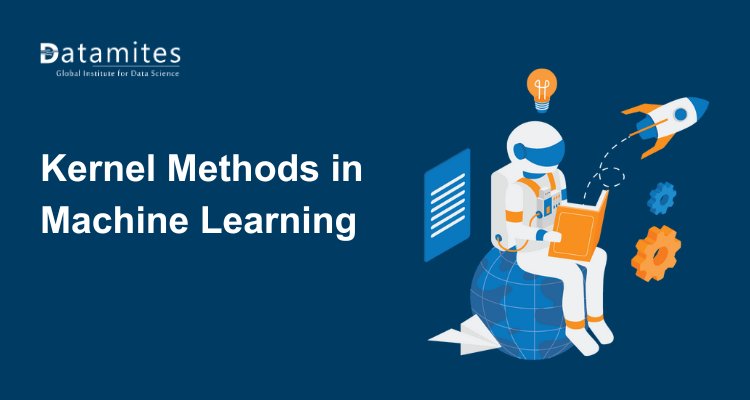Imagine standing on a foggy mountain range. The peaks rise around you, but visibility is so poor that you can’t see the full landscape. Now imagine rising above the fog in a helicopter—suddenly, what seemed random and disconnected reveals a pattern. Kernel methods in data science function just like that helicopter, offering a higher-dimensional view of data that appears inseparable in its original form.
They are the bridge between simple linear boundaries and the complex, curved relationships that define real-world problems.
The Challenge of Linear Thinking
In the early days of machine learning, algorithms such as linear regression and logistic regression worked well when data could be divided by straight lines. However, most real-world data—whether related to finance, healthcare, or social media—is not so simple. The boundaries are messy, curved, and tangled.
This is where kernel methods revolutionised the field. By mapping data to a higher-dimensional space, they enable models to find linear separations in a realm where relationships become clearer.
Learners diving into a data science course often find kernel methods a turning point—this is where the magic of mathematics transforms into practical modelling power.
The Magic of the Kernel Trick
At the heart of kernel methods lies a brilliant idea: instead of explicitly transforming every data point into higher dimensions (which would be computationally expensive), the kernel function computes similarity directly. It tells the algorithm how close two points are, even in complex feature spaces, without ever leaving the original space.
For instance, think of comparing two songs not by their lyrics or melody but by how much they “feel” alike to listeners. That’s the intuition behind kernel similarity—it’s not about comparing exact features but about measuring essence and relation.
This principle powers techniques like Support Vector Machines (SVMs), where kernels such as polynomial and radial basis functions (RBF) allow for flexible, curved boundaries.
Real-World Applications: From Images to Genomics
Kernel methods thrive wherever patterns are nonlinear. In image recognition, they help distinguish handwritten digits or objects with subtle differences in shape. In genomics, they identify genetic markers linked to diseases by modelling interactions too complex for linear systems.
They are also used in text analysis, sentiment prediction, and fraud detection—domains where relationships between features are intricate and not immediately visible.
Students exploring advanced modules in a data science course in Mumbai often encounter these applications, learning how to tune kernels for specific datasets and performance goals.
Choosing and Tuning the Right Kernel
There isn’t a one-size-fits-all kernel. Choosing the right one requires understanding both the data and the problem. The linear kernel works for simple, well-separated classes, while RBF captures complex, local relationships. Polynomial kernels are useful when interactions between features matter.
This tuning process resembles adjusting a camera lens. Too narrow a focus and the model misses important details; too broad and the noise overwhelms the signal. The art lies in finding the right balance—enough flexibility to capture truth without overfitting to noise.
The Broader Perspective
Kernel methods are not limited to classification—they extend into clustering, regression, and even principal component analysis through kernel PCA. The underlying philosophy is consistent: by reimagining data in a richer space, patterns that were invisible in one dimension become vivid in another.
Professionals who master these techniques develop a unique analytical vision—seeing structure within complexity and order within chaos—while a strong data science course foundation equips them to apply these skills across industries.
Conclusion
Kernel methods represent one of the most elegant ideas in data science: solving nonlinear problems by transforming how we view data itself. Like the helicopter rising above the fog, they reveal hidden order in what once appeared unstructured.
For aspiring analysts and professionals, mastering these methods isn’t just a technical skill—it’s an intellectual leap toward understanding the deeper geometry of information. Programmes like a data science course in Mumbai help learners grasp this intuition. In the evolving landscape of analytics, kernel methods remind us that sometimes, the best solutions emerge when we change the way we see the world.
Business name: ExcelR- Data Science, Data Analytics, Business Analytics Course Training Mumbai
Address: 304, 3rd Floor, Pratibha Building. Three Petrol pump, Lal Bahadur Shastri Rd, opposite Manas Tower, Pakhdi, Thane West, Thane, Maharashtra 400602
Phone: 09108238354
Email: enquiry@excelr.com











